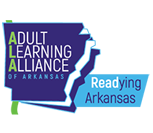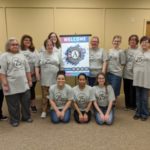Whether your students have already begun the process to earn citizenship or they are just considering the journey, there are best practices for tutors to support students. There are several trainings and resources on www.proliteracy.org and at www.citizenshipnews.us. The government also has a webpage to support those in the process, www.uscis.gov/citizenship. This blog post will highlight some of the common practices covered in those resources.
First, you should become familiar with the process of becoming a citizen. While you do not have to be an expert, you will need to know as much as possible about what your students are facing. Our video about the citizenship test gives a basic overview.
Most tutors and students spend their time together focusing on the test for citizenship. There are 2 sections to the test: The Civics Test and the English Test. For the Civics test the applicant must answer 6 out of 10 questions correctly from a list of 100. The English Test has 3 parts: the oral test, reading test, and writing test. Applicants get two chances at each portion. They only have to retake the portions they fail the first time. This 2 page breakdown of the parts is very helpful https://www.uscis.gov/sites/default/files/document/guides/test_components.pdf
Once your student is ready to study for the test, there are many sources for materials. Many of those materials are free online, and New Readers Press has a curriculum that includes materials for the test. Not only is it important to study the material, but practicing in a similar environment with similar pressures can make a big difference in a student’s success rate. Setting up a classroom that mimics the testing environment can help students overcome anxiety and boost confidence.
There are also certain accommodations that should be considered. Some are based on age and length of time in the United States. Tutors should also learn as much as possible about the rules of the test. For example, during the interview, the applicant has the right to ask for clarification in some cases.
Now, let’s look at some tips and strategies for each test section. Please note there are expected changes coming in 2024. We plan to update this article to reflect those changes

The English Test
The Reading and Writing Test
For this section, students are given a question on a printed sheet of paper and asked to read it aloud. Then, they are given paper and a pencil to write down a sentence that an examiner dictates. Applicants get 3 tries for each.
As in every case of tutoring, one must consider the range of abilities of a student in order to plan. It does help that the literacy test is largely history, government, and geography, so it is conducive to studying for the literacy and civics test at the same time. It also allows for practice for the interview.
The Oral Test
This is also known as the interview. An interview will ask questions that the applicant already answered on Form N-400. The interviewer may choose to word them many different ways, which makes oral practice critical. The planned changes for 2024 involve showing the applicant images and having them answer questions or explain things in the image.
The Civics Test
There is a limited set of questions that the test may pool from to choose the 10 students answer on their test. This helps tutors know what to practice, but be careful not to get too attached to specific wording. While the questions are likely worded the same or similarly on the test, the content also comes up during the interview and may not follow the same format. Practicing in different formats and wordings is important.
Hopefully this post is a strong starting point for you to support your student on their journey to becoming a US Citizen.







